




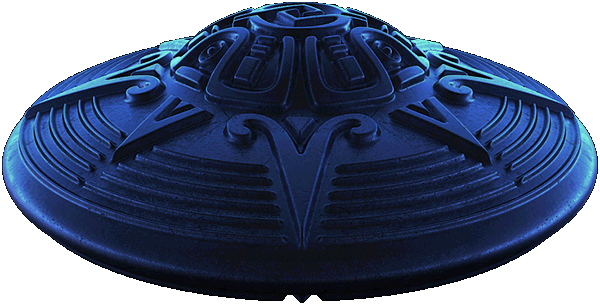




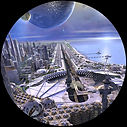






USS ENTERPRISE
Could we really build Star Trek's USS Enterprise?
The USS Enterprise, one of the most famous spacecraft
Launched into space from the mind of creator Gene Roddenberry in the 1960s, the U.S.S Enterprise NCC-1701 was the very first Star Trek spacecraft to reach warp speed on television screens around the world. The time-travelling, ultra-fast and near-invisible "Constitution-class" starship was the most advanced spacecraft at the time of its launch in 2245.
Built-in space, the U.S.S Enterprise was a feat of fictional engineering. It’s estimated that the spacecraft would weigh around more than four million tonnes in weight and house a crew of 430. In comparison, the heaviest man-made object to venture into space is the International Space Station (ISS), which has a mass of around 419 tonnes. However, China is reportedly researching the possibility of constructing a colossal spacecraft measuring up to 0.6 miles (0.96km) in length, the ISS is only 360 feet (110 meters) long.
Engineers still have 233 years until humankind reaches Roddenberry’s vision for space exploration and several scientific breakthroughs suggest that we might be heading towards a spaceship that’s reminiscent of the U.S.S. Enterprise.
As a Constitution-class Starfleet Federation starship, the main role of the Enterprise was to venture on intergalactic exploration and diplomatic missions. To assist them on their journeys of discovery, the Enterprise was equipped with an array of advanced scanners and sensors. Before descending upon foreign land, the crew aboard the Enterprise firstly flipped a few stitches and scanned the planet below for signs of life. It’s a pretty handy gadget to have when discovering new life, but one that seems unrealistic. However, scientists are one step closer to making the technology a reality.
You may like
LATEST VIDEOS FROM space
Click here for more Space.com videos...
Researchers have discovered that the biochemistry of all life forms interact with light in a way that inorganic or artificial materials don’t. For example, when light hits long chains of carbon molecules that make up amino acids (the building blocks of proteins) it becomes circulatory polarized. This means it travels in either clockwise or anticlockwise spirals. Scientists could theoretically observe and identify this light interaction in the hopes of discovering new life forms from observatories of spacecraft, such as novel Enterprise or from future space-based telescopes, such as the Large UV Optical Infrared Surveyor (LUVOIR).
Travelling faster than the speed of light
One of the most iconic abilities of the Enterprise is its ability to zip from one end of the galaxy to the next in mere moments, using its fictitious warp drive. Currently, humankind is nowhere near advanced enough to replicate the Enterprise’s warp drive. However, the theory behind building one has been around since the early 1990s.
To achieve speeds faster than the speed of light, physics’ natural speed limit, theoretical physicist Miguel Alcubierre proposed that we must bend the fabric of space-time. Space-time can be imagined as a sheet of rubber on which all matter sits, creating dips in the rubber relative to their mass.
Alcubierre proposed that if space-time could be folded in front of a spaceship and then expanded behind it, the ship could travel much faster than the speed of light and achieve "warp speed". This bending of space-time would theoretically continue to move in a wave and act as a conveyor belt carrying the spaceship along it.
To achieve such space-time manipulation, Alcubierre suggested that an enormous amount of negative mass, a phenomenon rarely created in laboratories and seen as vacuum energy in space. The amount of negative mass needed to facilitate Alcubierre’s warp drive would have to be equivalent to the mass of a massive star distributed in a ring around a spacecraft. This hypothetical ring of negative mass would create a "warp bubble" which would distort space-time and transport any spacecraft within it.
Although Alcubierre’s theory required negative mass, recent research out of Göttingen University, Germany, offers a new area of physics for researchers to explore potentials for warp power. In 2021, Physicist Erik Lentz hypothesised that positive mass and energy could also provide the necessary requirements to construct a warp bubble. Instead of a solid ring of negative mass detailed in Alcubierre’s theory, Lentz proposes that layering rings and risks of extremely dense fluid, similar to the composition of a neutron star’s interior, would yield the same result.
With the ability to bend space-time, those inside of the warp bubble could travel through space faster than the speed of light without breaking any physical laws. For example, much like the ability to walk freely in the belly of an airplane, the warp bubble would theoretically also allow a spaceship and its crew to move around without feeling the effects of warp speed.
There are several questions that remain unanswered about building a real-life warp capable vessel, such as how to control it’s direction and distance, as well as how do you exit a warp bubble?
In Star Trek, however, to fuel their warp drive and create enough energy to bend space-time, the U.S.S Enterprise uses the annihilation reaction between matter, in the form of deuterium (a real-world isotope of hydrogen), and antimatter, which is regulated by a fictional crystal called dilithium. The “electro-plasma” energy released from this reaction creates the necessary warp bubble to manipulate space-time and move.
The biggest hurdle to overcome in using annihilation reactions for energy is producing enough antimatter to power a warp drive.
One of Star Trek's most famous inventions is the teleporter (Image credit: AA Film Archive/ Paramount)
As the name suggests antimatter is a mirrored and opposing version of matter, for example, an electron has a negative charge so its antimatter partner has the same mass but an opposite positive charge, called a positron. In order to create antimatter, particle accelerators, such as the Large Hadron Collider, which fire particles at one another to release antimatter.
Related articles
Star Trek: Latest News The Greatest Spaceships of Science Fiction 6 'Star Trek' Captains Ranked from Worst to Best
However, there are several physical issues with antimatter as a fuel source. First, the yield of its production is very low. For example, the Fermi National Accelerator Laboratory (Fermilab) can only produce enough antimatter in an hour to power 1/1000 of a watt and therefore 100,000 Fermilabs would be required to power a single light bulb. Due to the fact that antimatter annihilates when it comes in contact with matter, storing it is near impossible as everything is made up of matter.
Despites these quantum woes, research into antimatter spacecrafts is still in development. One of the latest advancements in antimatter propulsion, is NASA’s proposal for a space probe that will travel all the way to our stellar neighbourhood Proxima Centauri, using an annihilation accelerator. But until scientists can successfully mass produce and store antimatter, powering a spacecraft that resembles the Enterprise remains firmly in the realm of imagination.
Additional resources
Keep up with the all the latest Star Trek news on the official site. Or if you wanted to see how the different USS Enterprises Rank, check out this article by Popular Mechanics or this one by Gizmodo.
Bibliography
-
Adam Mann: "Scientists are Building a Real Life Version of The Starship Enterprise's Life Scanner" LiveScience, 2019
-
Deceleration of Interstellar Spacecraft Utilising Antimatter
-
Robert Gast "Star Trek's Warp Drive Leads to New Physics" Scientific American, 2021
-
Matt Williams "What is the Alcubierre 'warp' drive?" Phys.org, 2017
-
Sarah Lewin; "Will Anti-Matter Engines Power the First Starships?" Space.com 2016
-
Spacecraft in a ‘warp bubble’ could travel faster than light, claims physicist - Physics World
-
Bill Andrews: "If Wormholes Really Existed Could We Travel Through Them?" The Verge, 2019
-
"Deflector shield envisioned for Mars mission" NBC News
-
"Measurements of galactic cosmic ray shielding with the CRaTER instrument" AGU
-
"Needed: Materials for 24th Century", JOM 48 (6) (1996), pp. 14-16. Starships"
-
"Spaceships Made of Plastic Could Carry Us to Mars" Smithsonian Mag
-
"The Dxter Is A New Tricorder Sensor That Can Detect Various Medical Conditions" Strammer.com
-
"Quantum Teleportation Was Just Achieved With 90% Accuracy Over a 44km Distance" Science Alert



Engineer Thinks We Could Build a Real Starship Enterprise in 20 Years
[/caption]
In Star Trek lore, the first Constitution Class Starship Enterprise will be built by the year 2245. But today, an engineer has proposed — and outlined in meticulous detail – building a full-sized, ion-powered version of the Enterprise complete with 1G of gravity on board, and says it could be done with current technology, within 20 years. “We have the technological reach to build the first generation of the spaceship known as the USS Enterprise – so let’s do it,” writes the curator of the Build The Enterprise website, who goes by the name of BTE Dan.
This “Gen1” Enterprise could get to Mars in ninety days, to the Moon in three, and “could hop from planet to planet dropping off robotic probes of all sorts en masse – rovers, special-built planes, and satellites.”
Size comparisons of buildings to the proposed USS Enterprise. Credit: BuildTheEnterprise.org
Complete with conceptual designs, ship specs, a funding schedule, and almost every other imaginable detail, the BTE website was launched just this week and covers almost every aspect of how the project could be done. This Enterprise would be built entirely in space, have a rotating gravity section inside of the saucer, and be similar in size with the same look as the USS Enterprise that we know from Star Trek.
“It ends up that this ship configuration is quite functional,” writes BTE Dan, even though his design moves a few parts around for better performance with today’s technology. This version of the Enterprise would be three things in one: a spaceship, a space station, and a spaceport. A thousand people can be on board at once – either as crew members or as adventurous visitors.
While the ship will not travel at warp speed, with an ion propulsion engine powered by a 1.5GW nuclear reactor, it can travel at a constant acceleration so that the ship can easily get to key points of interest in our solar system. Three additional nuclear reactors would create all of the electricity needed for operation of the ship.
The saucer section would be a .3 mile (536 meter) diameter rotating, magnetically-suspended gravity wheel that would create 1G of gravity.
The first assignments for the Enterprise would have the ship serving as a space station and space port, but then go on to missions to the Moon, Mars, Venus, various asteroids and even Europa, where the ships’ laser would be used not for combat but for cutting through the moon’s icy crust to enable a probe to descend to the ocean below.
Of course, like all space ships today, the big “if” for such an ambitious effort would be getting Congress to provide NASA the funding to do a huge 20-year project. But BTE Dan has that all worked out, and between tax increases and spreading out budget cuts to areas like defense, health and human services, housing and urban development, education and energy, the cuts to areas of discretionary spending are not large, and the tax increases could be small. “These changes to spending and taxes will not sink the republic,” says the website. “In fact, these will barely be noticed. It’s amazing that a program as fantastic as the building a fleet of USS Enterprise spaceships can be done with so little impact.”
“The only obstacles to us doing it are the limitations we place on our collective imagination,” BTE Dan adds, and his proposal says that NASA will still receive funding for the science, astronomy and robotic missions it currently undertakes.
A detailed schedule of building the Enterprise. Credit: BuildTheEnterprise.org
But he proposes not just one Enterprise-class ship, but multiple ships, one of which can be built every 33 years – once per generation – giving three new ships per century. “Each will be more advanced than the prior one. Older ships can be continually upgraded over several generations until they are eventually decommissioned.”
BTE Dan, who did not respond to emails, lists himself as a systems engineer and electrical engineer who has worked at a Fortune 500 company for the past 30 years.
The website includes a blog, a forum and a Q&A section, where BTE Dan answers the question, “What if someone can prove that building the Gen1 Enterprise is beyond our technological reach?”
Answer: “If someone can convince me that it is not technically possible (ignoring political and funding issues), then I will state on the BuildTheEnterprise site that I have been found to be wrong. In that case, building the first Enterprise will have to wait for, say, another half century. But I don’t think that anyone will be able to convince me it can’t be done. My position is that we can – and should – immediately start working on it.”





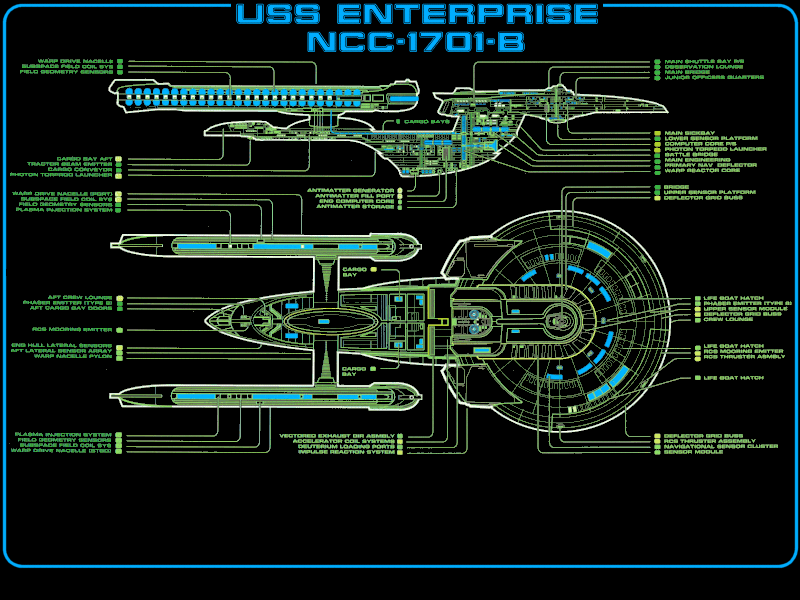







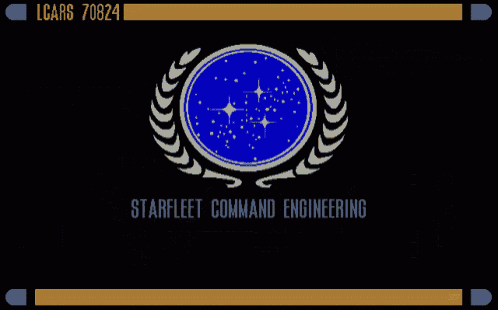








This website proposes something truly inspiring. It is this: We have the technological reach to build the first generation of the spaceship known as the USS Enterprise – so let’s do it. The ship can be similar in size and will have the same look as the USS Enterprise that we know from the Star Trek science fiction. It ends up that this ship configuration is quite functional. This first generation Enterprise can have 1g artificial gravity and ample living space. It can be as comfortable to live in as being on Earth. A thousand people can be on board at once – either as crew members or as adventurous visitors.
While the ship will not travel at warp speed, it can travel at a constant acceleration such that the ship can easily get to key points of interest in our solar system.The Enterprise would be three things in one: a spaceship, a space station, and a spaceport. Finally we will have a permanent and viable foothold in space – a sustainable, roving village out in the heavens. Building the Enterprise will provide a giant leap forward for the human race when it comes to the task of establishing a permanent infrastructure in space, on the moon, and on Mars – an infrastructure needed to pull us farther out into space, the place we are surely destined to explore and live.
The Enterprise could get to Mars in ninety days; it could get to Earth’s moon in three. It could hop from planet to planet dropping off robotic probes of all sorts en masse – rovers, special-built planes, and satellites. It could use its extensive on-board sensors to map and explore planet surfaces and examine whatever it encounters in space, whether near or far away. It could drop a hydrobot on to Jupiter’s moon Europa after using its laser to bore a hole through the thick surface ice.
The hydrobot will then drop through the hole in the ice and descend until it reaches the water below – next beaming video images back to Earth so that we can watch as the hydrobot explores Europa’s vast, hidden ocean. It could hunt down asteroids that may threaten Earth and divert them long before we are in danger.After the Enterprise enters the Mars orbit it can launch a Universal Lander to put the first humans on to the surface of Mars while carrying two backup landers just in case the crew encounters problems. On Earth we can all watch in awe as the first humans step on to another planet.
The Enterprise could carry huge loads of cargo to key places in our solar system. This will enable the establishment of permanent outposts beyond Earth. It could carry the structures, cargo, and laser-digging equipment needed for building large and comfortable underground bases on Mars and the moon where inhabitants would be fully shielded from cosmic rays. It could be used for hauling mined materials from asteroids, Mars, and the moon on an experimental basis. Some of these mined materials can be used to sustain the Enterprise itself. It can have its own on-board experimental manufacturing facilities to, for example, process some mined materials to create its own propellant.
A new Enterprise-class ship can be built every 33 years – once per generation – giving three new ships per century. Each will be more advanced than the prior one. Older ships can be continually upgraded over several generations until they are eventually decommissioned. And one day – perhaps a century or so from now – a 4th or 5th or 6th generation ship will have the engines that will be able to maintain a constant 1g acceleration for the nine years needed to travel to Alpha Centuri, the nearest star to Earth. From there, when the human voyagers look back at our sun it will be just another star in the Milky Way galaxy. In time Enterprise-class ships will be able to visit more and more stars in the galaxy.
Humanity will be on the way to the explorations that we are destined to pursue. And as we detect more and more planets in the habitable zones around stars we will more than likely discover other life in the universe besides that on our planet Earth. A future Enterprise can visit those places.The Gen1 USS Enterprise is a huge ship. At .6 miles in length it’s bigger than any craft or building ever constructed. It’s nearly three times as long as the largest US aircraft carrier, and its length is greater than the tallest building in the world.Why is it so big? First, it must house a gravity wheel that is large enough in diameter so that people are comfortable inside of it and the behavior of gravity to them seems reasonably earthlike.
Second, the Enterprise is a combination of spaceship, space station, and spaceport. This means it must support having many people on board at once – up to a thousand at any given time. It must be able to dock and refuel multiple smaller spacecrafts at the same time. And the huge cargo-carrying capacity is critical for hauling probes, landers, and base-building equipment to Mars and elsewhere. Simply put, if we want to get serious about establishing a permanent human presence in space, with robust and sustainable capabilities to do big things up there, we need a big ship.
The Universal Lander can depart from the Enterprise and land on the Earth, the moon, or Mars – but it can also launch from the Earth, the moon, or Mars and return to the Enterprise. More broadly, the idea of the Universal Lander is to create a super-robust spacecraft that can fly and land anywhere in our solar system that is hospitable to human visitors.The Universal Lander is a SSTO (Single Stage to Orbit) type spacecraft.
This means that it can launch from the Earth, the moon, or Mars with only the rockets and fuel within the craft. Thus there are no add-on external fuel tanks or boosters that are jettisoned during a launch of the Universal Lander like has long been a familiar sight when watching launches of spacecrafts carrying humans.
An example of an SSTO was the X-33 spacecraft (shown in the image) that was canceled by NASA in 2003 just before flight testing was to begin. There are also many other SSTO crafts being investigated today (like the Skylon), although funding is very low.
In vehicle or ship design – whether it’s the design of a car, truck, aircraft carrier, cruise ship, or spaceship – form should follow function. The same is true in the design of buildings on earth. In fact, form follows function is a guiding principle in modern architectural design. It makes sense that form follows function when designing a building, vehicle, or ship because then the resulting human-made creation is maximally useful to people. When form follows function, the building, vehicle, or ship achieves the optimal operational performance possible for its purpose at the lowest overall cost.
So it follows for the Gen1 Enterprise that its form should follow its function. To determine if the Enterprise’s form is appropriate for Earth’s first space supership, we must first clearly define the ship’s function. And since the Enterprise has many functions, a ranked list of these functions is needed.
In ranked order of importance, the Gen1 Enterprise’s top eight functions are:
-
Inspire people around the world about the adventure of humans going into space in a big way.
-
Serve as a space station & spaceport with 1g artificial gravity to support large-scale space tourism and to encourage substantial private sector investments in space infrastructure.
-
Take the first humans to Mars.
-
Enable the construction of a large, permanent base on Mars.
-
Visit an asteroid, do experimental mining of it, and do tests to divert its movement.
-
Construct a large, permanent base on the moon.
-
Serve as a roving space station to support diverse scientific experiments and space projects.
-
Go on other interplanetary missions, like to Venus and to Jupiter’s moons.
However, it should be acknowledged that for functions 3-8 that the Enterprise is not the most functional form for a ship. If NASA was designing a ship where the functional requirements for it were only driven by functions 3-8, it would surely not look like the Enterprise. But, again, the form of Earth’s first supership should not primarily be based on functions 3-8, it should be primarily based on functions 1-2.
The ship’s form just has to adequately service the operational requirements for functions 3-8 and give a safe ship for those on board. It doesn’t matter if the Enterprise is not the perfect form for a ship going on interplanetary missions – it only has to be good enough.
A spaceship in the form of the Gen1 Enterprise will act like a giant magnet in the sky when orbiting the Earth – a magnet that is constantly pulling people and businesses from around the world up toward the heavens. The building of the first USS Enterprise will inspire people on Earth like no other project before it. Indeed, we can all watch in awe as the Eighth Wonder of the World unfolds above us.
The Enterprise has four hulls: the saucer hull, the main engine hull, and the two aux engine hulls as shown above.From the outside of the ship to any point on the interior of the ship at least three walls will be found for abiding by the design philosophy of triple redundancy for all key systems. The first wall, the outermost wall, creates the exterior surface of the ship. This is made of aluminum because aluminum is a proven material for handling the extreme temperature variations that the ship’s exterior surface must tolerate as the ship moves about in space.
The inner walls of the ship will be made of composite materials because they are lighter, stronger, and provide better shielding from radiation. These inner walls can also withstand the extreme temperature cycling that occurs in space, but perhaps not for years and years like aluminum can. But the composite walls can tolerate the temperature extremes for awhile as might be needed in case the aluminum exterior is ever damaged such as during a meteor strike or collision of some type. The inner walls then can take over the function of the outer aluminum wall until the aluminum can be repaired.
Except for the donut-shaped cavity in the saucer hull that houses the gravity wheel, the standard wall plan used in all four hulls is shown to the right.The standard triple walls shown achieve 2.5 gram/cm2 of passive radiation shielding. The large 8 foot gap between the outermost wall and the middle wall is to provide a space for workers working on either of these walls. Also, this space allows for future upgrades to the hulls. Perhaps in the future active shielding equipment will be installed in the 8 foot space. Ideally, a future upgrade could provide an active shielding system to protect the whole ship from radiation in space.
For inside of the pods in the gravity wheel, more shielding is used since people will spend much more time in these pods than in the lesser shielded gravityless places in other parts of the ship. For these pods, four walls exist from the outside of the ship to the inside of a pod. The outer two walls are for the donut-shaped stationary cavity in the saucer hull that houses the floating gravity wheel, and the two other walls are for the pod in the rotating gravity wheel.
These walls are collectively thicker than in other places of the ship to give more shielding but also to give them more mechanical strength to assure that the gravity wheel and the donut-shaped cavity are sturdy and will not come apart in the case of an emergency that somehow perturbs the normal operation of the gravity wheel. Shown below are the four walls. These walls collectively provide 6.25 gram/cm2 of shielding.
When going from the stationary saucer hull to the gravity wheel an elevator is needed. This is an unusual elevator in that it must start from being stationary and then begin moving in a circle around a track while following the rotating gravity wheel until it catches up. After catching up, and maintaining a speed of about 100 miles per hour, near 1g gravity takes hold inside the elevator. People can then move down an exit shaft in the elevator, through some airlocks, and into the upper ceiling area of a pod in the gravity wheel. From there, a conventional elevator like on earth can be ridden down to the floor of the pod.
The moving part of the elevator system is magnetically suspended to avoid the noise and wear that friction would cause if this moving mass instead rode directly on a circular rail.
The technology to suspend and move the gravity wheel can be leveraged and applied to the elevator.The elevator and magnetic track are inside the donut-shaped cavity that houses the gravity wheel in a vacuum.
This is necessary because the elevator must catch up to the moving gravity wheel and then attach to it for transferring people and cargo. This could not be done if the elevator was outside of the donut-shaped cavity that houses the gravity wheel. This also explains why, as mentioned above, that an airlock is needed for transferring people and cargo between the elevator and a gravity wheel pod. An airlock it needed to avoid exposure to the vacuum.
The Gen1 Enterprise will serve as a large spaceport for smaller spacecrafts. Three large, hinged, motorized doors will be located on the underside of the saucer haul. After a door swings open, a visiting spacecraft enters the Enterprise and then the door will close. Thus the doors provide entryways for visiting spacecrafts into the Enterprise’s saucer hull where they are then docked.Three doors are used to provide triple redundancy for safety and reliability.
Inside the doors, hangars exist where the visiting spacecrafts can be maintained, refueled, and cargo can be loaded and unloaded. And of course visitors will come aboard and leave the Enterprise via the smaller spacecrafts that are coming in or leaving through the hinged doors in the saucer hull.Each door is approximately 250 feet by 250 feet. This will be more than large enough to accommodate a large spacecraft that may request to be docked. For reference, each door is larger than a 747 aircraft as can be seen by the diagram below. And each door is much bigger than a Space Shuttle which is also shown below.
http://www.buildtheenterprise.org/shielding
THE ENTERPRISE
YOU CAN READ MORE ABOUT THE BUILDING OF THE ENTERPRISE IF YOU FOLLOW THE LINK
It should be noted that while there are three doors for redundancy, they do not have to all be in active service during normal operation of the ship. Two doors, or even one door, should be adequate for handling traffic to and from the Enterprise. This allows the sections inside the Enterprise above the other doors to be normally used for purposes other than being a hangar for spacecrafts. This allows for more efficient use of the interior spaces of the ship and aviods wasting space. However, if an emergency ever arrived, and these unused doors need to be opened to accommodate spacecrafts, this can be done on relatively short notice.






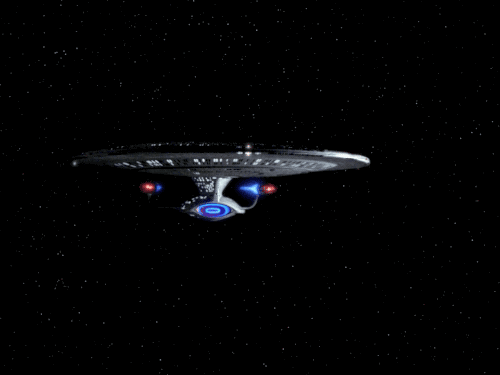

What would it take to build some of the most famous sci-fi ships?
Fancy a real Star Destroyer? Prepare to break the bank to get one.
Published: Mar 22, 2022 04:01 AM EST
3 years ago
What would be the most expensive sci-fi spaceship to build if we were to attempt it today? A Star Destroyer? The USS Enterprise? How about the Battlestar Galactica?
A worthy question to answer, so join us as we make some very, very, rough estimations of their construction costs.
What resources would it take to build sci-fi spaceships?
Let’s imagine that the world’s largest economy, currently the United States, decides to use some, or all, of its military budget to build a working spaceship. How much would it cost? Could it be done?
Working on the most recently available figures, the United States defense budget is somewhere in the region of $778 billion. That’s a hell of a lot of money, but is it enough to actually build a spaceship?
Let’s have a look.
Please note, the following scenarios make a lot of assumptions about certain things, such as the size, weight, etc. of spacecraft. Since no actual “real” technical information exists for these figures, and since most of the technology they incorporate does not exist, the figures should be taken with a mountain of salt.
1. It would take a lot of resources, and time, to build an Imperial Star Destroyer
Source: Star Wars
One of the most iconic spaceships in the entire genre of science fiction is the Imperial Star Destroyer (ISD) from the Star Wars franchise. Two main variants exist in the Star Wars universe, the Class-I and Class-II, with both stretching over 1 mile, or 1.6 km, long according to Star Wars lore.
Depending on the sources you use, Star Destroyers also have a height of about 3,199 feet (975 meters) and a width of 1,598 feet (487 meters).
With an iconic wedge shape, each ship is heavily armed and heavily armored and requires a crew of somewhere in the region of 37,000 people to operate and fight them. Armament includes a range of laser and ion cannons, as well as a series of missile launchers and a complement of tie fighters, bombers, interceptors, and other support craft.
According to Star Wars lore, at the height of the Galactic Empire around 25,000 of these mighty war machines, give or take, were built.
All very interesting, but what would it take to build one today, assuming we had the technology to do so?
Thankfully, some very clever people with perhaps a little too much spare time on their hands have already attempted to answer this very question. According to one source, a single Class-I Imperial Star Destroyer would cost around $636 billion apiece. And that’s just for the basic parts.
Getting all that stuff into space would likely push the budget into the many trillions using conventional means like rockets. (Although building it in space using materials mined in space would be a cheaper option.) But, how was such a figure calculated?
The first step is to find some contemporary proxies to give us an idea of building costs for large war machines. A good starting point could be the latest United States supercarrier USS Gerald R. Ford. This is the closest thing that exists today with regards to size and combat role, so is a good starting point.
Of course, simplifications would also need to be made to exclude technologies that don’t yet exist. For example, the cost of hyperdrives, tractor beams, force fields, artificial gravity generators, etc. can’t really be estimated so we’ll just have to do without them. Costs also exclude very thick exterior plating or the use of yet-to-be-discovered exotic materials.
The calculations also assumed that the vessel would actually need to travel in “outer space” and escape Earth’s gravity well.
Based on this, the first step was to calculate a Class-I Star Destroyer’s volume, at around 52.8 million cubic meters. This value is a very rough approximation and ignores elements that extrude from the ship, like the bridge, domed power generator, etc.
That’s a lot of stuff, but not beyond the capability of modern industry. Large ships, like the Allure of the Seas, for example, are roughly 1.188 million cubic meters in volume, so a Star Destroyer would be equivalent to about 44 Allure of the Seas.
But how about powering the thing? Returning to the Gerald R. Ford-class aircraft carrier as an existing proxy, its twin A1B PWR nuclear reactors kick out about 3.3 GW of electricity. The aircraft carrier weighs about the same as one Allure of the Seas, and so we can roughly estimate that a Star Destroyer would need about 44 times the power, at about 146.5 GWh overall.
With regards to propulsion, we are told a Star Destroyer is pushed along using giant ion engines or drives. The most powerful available are the NASA Evolutionary Ion Thruster (NEXT) which has a power rating of 7 kW and a thrust of 0.25 Newtons.
NEXT is the closest thing we have to ion drives in Star Wars. Source: NASA
That is not much alone, but if, say, 14 million of these could be strapped to the back of the Star Destroyer, it should be possible to push the ship along with a combined total thrust of 3.5 million N, which would accelerate the ship at 0.8 mm/s²
This sounds tiny, but over time the ship could get up to some decent speeds. The rated speed of a Star Destroyer is about 270 m/s, or 972 kph, which would take about four days to reach with this setup. At an estimated $10,000 per thruster, the propulsion system would cost about $140 billion.
So, we now have a large chunk of material with some propulsion and power enough to keep the lights on, but it can’t really do anything else. It needs some armament.
For the ship’s defense systems and long-range main armaments, we are told a Star Destroyer has around 60 turbolasers and 60 ion cannons. These are clearly very powerful fictional weapons, but the closest thing that exists today is the ATHENA laser.
These are rated at about 60 kW and cost $33 million each. It is expected that this can be improved to 500 kW, which should be enough to enable them to disable planes and trucks.
Assuming we could get this more powerful version for the same price, and need four of them per turret, that’s a total cost of $100 million for each turret. Nothing like an ion cannon exists today, so we’ll swap them out for lasers, for a total cost of $12 billion.
But, Star Destroyers also have a complement of fighters and other craft, much like an aircraft carrier. Beyond the ion engines, there is little else around to use a proxy for TIE Fighters – especially with very high acceleration. So, taking something like the Lockheed Martin F-22 as a rough guide, with a cost of $150 million apiece, 72 TIE fighters and their derivatives, would likely cost around $11 billion. With added stuff like Imperial Shuttles, AT-AT walkers, etc, we can round that figure up to about $20 billion.
All in all, that gives us a grand total so far of:
-
44.4 aircraft carriers at $10.44 billion apiece = $464 billion
-
Laser batteries, for a total of $12 billion
-
Engines for a total of $140 billion
-
TIE fighters, AT-ATs, etc, for a total of $20 billion
Totting all that up gives a grand total of $636 billion per Star Destroyer. Great, but we have some huge problems remaining – our large chunk of stuff is stuck firmly on Terra Firma and we have no crew! We also haven’t paid the workers (or fed them) for building it – let’s assume they are doing it for free as they love Star Wars so much.
Source: Guido Gloor Modjib/Flickr
As for getting all that material into space, the only practical solution at the moment is to use rockets, like SpaceX’s Falcon Heavy. Each launch costs around £135 million in order to get about 13 imperial tons, or 13.2 metric tons into space.
With our Star Destroyer likely weighing in at several million kgs, this will take quite a few launches (hundreds of thousands in fact) with costs likely running into the trillions. At this kind of level of cost, it would probably be wise to invest in a space elevator or asteroid mining venture to support the operation.
So, based on 2020 U.S. Defense spending, we could get, very roughly, a single Star Destroyer, excluding shipping to space and crew costs.
2. The USS Enterprise from Star Trek would be an equally challenging venture
Source: Fandom
Since we’ve discussed Star Destroyers, it would be remiss of us to not consider what it might take to build the venerable USS Enterprise from Star Trek.
“But which one?” we hear you shout. For this very rough estimation of the resources needed we’ll go with the USS Enterprise from Star Trek Beyond (NCC-1701-A in the “alternative reality” series) for no other reason than this is the only one that we found some calculations for.
This variant measures around 2,380 feet (725 meters) long which is roughly half a mile. It has a height of about 625 feet (190.5 meters), and the main saucer is about 1,000 feet (304.8 meters) in diameter. This also makes the USS Enterprise just over a third the length of a Star Destroyer, so, we can expect some savings here don’t you think?
Let’s find out.
According to some other people with a lot of time on their hands, the USS Enterprise would be very expensive but it should be possible to build a semi-working replica of one with some great effort. As with the Star Destroyer, it is necessary to make some comparisons to the closest thing they had at the time of calculation, a Nimitz-class aircraft carrier, namely the USS George H. W. Bush, commissioned in 2009.
This ship cost around $6.2 billion to build and is around half the size of the USS Enterprise, so we can have a very rough starting guide cost of $12.4 billion for the hull. We’ll assume the engineers are able to develop a space-worthy, airtight, and working “model” of the Enterprise for that money.
Yes, not very scientific, but without detailed schematics of the floor plans of the USS Enterprise to hand (and the complex maths involved), this is the best guestimation we have.
OK, so for that we should get a Star Trek USS Enterprise-looking thing, but, as before, it needs propulsion and some weapons. We’ll again forego the futuristic technologies that have no proxies like replicators, matter-antimatter reactors, teleporters, holodecks, shields, warp drives, exotic materials, etc.
We’ll even have to do without a diverse crew of alien species, too, we are afraid.
Since this ship will likely need to defend itself, we’ll start with armaments. The USS Enterprise is armed with phaser arrays and photon torpedoes as its main weapons systems.
In the absence of “photon torpedoes”, we’ll give our USS Enterprise some Trident II missiles. Source: The National Interest
We have nothing like photo torpedoes, but we could probably swap them out for nuclear missiles instead. One of the most advanced today is the UGM-133 “Trident II.” While technically developed for launch from a submarine, it should be possible to modify them for space launch.
Each one costs around $31 million to build, so for a complement of say 38 (the number given for the USS Voyager), that’s a total cost of $1.18 billion, give or take.
As for phasers, we don’t have anything like this in existence, sadly. The closest things that do exist, as for the Star Destroyer, are the aforementioned ATHENA laser systems.
Apparently, the Enterprise has six phaser arrays, but that doesn’t really give us an idea of the number of lasers needed. According to Star Trek lore, phaser arrays are strips along the hull that contain numerous phaser emitters in strategic locations around the ship.
We have no way of knowing exactly how many individual emitters are needed, so we’ll use a figure similar to the Star Destroyer. That’s another $12 billion added to the price tag, thank you very much.
Great, but the ship still lacks any form of propulsion. While “warp drives” are currently being researched, we don’t have anything like that at present (at least as far as we know). For sub-light-speed propulsion, the Enterprise uses something called “impulse drives,” which are apparently very similar in design to fusion rockets.
Amazingly, something similar has been in development in the past that uses something strangely similar to dilithium crystals. Using a combination of deuterium (a stable isotope of hydrogen) and Li6 (a stable isotope of lithium), this engine could work in a similar fashion to a fusion rocket. However, we are nowhere near being in a position to develop these fully, let alone bolt them onto an embryonic spaceship.
Again, these don’t exist yet, so we’ll have to make do with something else. So, we’ll just use the same ion engines as the Star Destroyer. That increases the budget needed by another $140 billion.
Just like the Star Destroyer, if our “I can’t believe it’s not the USS Enterprise” is built on Earth, all those components need to get into space for assembly and launch. Using the USS George W. H. Bush again as a proxy, she weighs in at about 114,000 short tons, with a pair at double that. A short ton, in case you have never heard the term before, is 2,000 lbs, or 907.18 kgs.
SpaceX Falcon Heavy rockets returning to Earth. Source: Official SpaceX Photos/Flickr
At the current going rates for using something like SpaceX’s Heavy Falcon again, that’ll be a total of roughly $456 billion to ship everything to where we want it. It also completely ignores the cost of manpower to do all that work, or, of course, we only employ the services of Trekkie volunteers.
Either way, the crew of likely several hundred would need to be fed and watered. Since we don’t have the technology yet to make true replicators, foodstuffs will need to be brought to the ship in orbit. The only real-life analog we have for this is NASA’s contract with SpaceX and Orbital Sciences Corp which had a budget of $3.5 billion when awarded to them in 2008.
This contract calls for the companies to deliver stuff like food to the International Space Station, so this could be extended (or added to) to feed our construction crew and ship’s complement (at least while it’s in Earth’s orbit).
Just like the Star Destroyer, however, many of these transport costs could likely be significantly reduced if we plan on building more Enterprise-like ships by investing in a space elevator, skyhook, or completing everything in space by building a spaceport in orbit and using raw materials mined from asteroids, etc.
So, the “final” bill comes in at roughly the following:
-
Roughly 2 Nimitz-class aircraft carriers for the hull = $1.174 billion
-
Laser batteries, for a total of $12.4 billion
-
Trident II missiles, about 38, for a total of $1.174
-
Engines for a total of $140 billion
-
Food for crew for a total of $3.5 billion
-
Postage and packing to space = $464 billion
That gives us a very rough grand total of $622 billion. The 2020 U.S. defense budget could actually cover this with some cash to spare.
3. Let’s build a “Battlestar,” shall we?
Source: battlestarwiki
Great, we appear to be hitting our stride, so let’s try another ship. How about, for example, our own real-life versions of a battlestar, like the Battlestar Galactica?
Designed by human colonists on various worlds to combat a hostile alien species, called the Cylons, 12 or so of these behemoths were constructed. A mixture of an aircraft carrier and battleship in space, these ships, at least those that survived, are the only safe refuge for their human occupants after the Cylon Wars.
If you’ve never watched the original or reboot series of the same name, we thoroughly recommend it. For those of you more than familiar with old Galactica, let’s try to estimate how much it would cost to replicate her today.
We’ve already covered some of the major points above with the Star Destroyer and USS Enterprise, so we’ll take some shortcuts when pricing her up. Let’s start with the hull.
According to the lore, each battlestar measures around 4,700 feet (1.4 km) long, with a width of 1,761 feet (536.84 m), and a height of 601 feet (183.32m). That’s a very big ship, yet still dwarfed by the Star Destroyer we priced up earlier.
Using similar metrics of comparison, a battlestar, being about 15 percent smaller, could attract a similar percentage discount on construction costs. So, we’ll bring that figure down to a nice $395 billion.
Thankfully for us, a battlestar is relatively unsophisticated with regards to its electronics, etc, as they were specifically designed to be as analog as possible in order to prevent systems from being “hacked” by the Cylons. This will probably mean that the costs for her construction might actually be a lot less than estimated above.
Also, unlike many other sci-fi franchises, battlestars, rather refreshingly, do not even attempt to install “shields,” but rather rely on very thick and tough armor plating – much like an Earth battleship.
Battlestars are sort of a blend between an aircraft carrier and a battleship in space. Source: NavWeaps/U.S. Navy
Armaments used are effectively projectile weapons for close-in defense much like many of our contemporary warships. Battlestars also come equipped with missile defense systems, too.
Little more information is provided for these systems, so we’ll just install some contemporary versions of these weapons like the Phalanx CIWS system. Each weighs around 6.200 kgs, and each Battlestar has around 515 dual-barrel turrets. We’ll assume we get each for the same price as a contemporary Phalanx, at $5.6 million each, or $2.88 billion for the complete complement.
Battlestars also come with large offensive turrets, similar to World War II-era battleships. According to Battlestar Galactica’s official wiki, each ship has between 24 and 50 dual gunned turrets. No further information is available on these except the shells (either flak or “offensive” ammunition) are too large to be loaded by hand.
The largest caliber guns ever mounted on a battleship were the enormous 18-inch (457.2mm) guns of the Japanese super battleship Yamato, so we’ll just use some of those, shall we?
No reliable costs are available for those kinds of guns (and turrets) as they are no longer used on modern warships. However, the WW2-era Iowa-class battleship’s triple-gun turrets cost around $1.4 million at the time (minus the barrels). In today’s money that would be about $28.37 million.
If we make some assumptions that turrets can be made to work in the void of space, we’d need about 38 of these at a total cost of $1.08 billion. Heaven knows how much the ammunition would cost, but let’s give it some of the most advanced kinds available – the Raytheon-made “Excalibur” round for $70,000 apiece. They’re smaller than the caliber we need, but let’s assume they can be scaled up for about the same price (we’ll be ordering in bulk after all).
Again using Iowa-class battleships as a proxy, each had around 1,200 rounds per turret, so we’ll run with that.
With 38 turrets, we’d need 45,600 rounds for a total cost of $3.19 billion. These are guided rounds, which would be useful in space.
Battlestars come with about 40 “Viper” fighters. Source: Battlestar Galactica Wiki
Battlestars also come with a small cache of nuclear warheads, too – which is handy. The only number we’ve been able to find is that Galactica has at least 5 of these, so we’ll use that.
Again, using Trident IIs, we’ll need another $155 million for those (though likely more in “reality”). All-in-all, our battlestar’s total armament comes in at a cool £7.305 billion.
As for a Battlestar’s fighter complement, Battlestars come equipped with 40 “Viper” fighters of various marks, and an unknown number of “Raptor” recon craft. If we equip our Battlestar with the most iconic variant, the Mark II, these are equipped with mass accelerator cannons, “Javelin” missiles, and are powered by “turbo thrust engines.”
Since we have no aircraft currently capable of flying in both space and the atmosphere, like a “Viper,” we’ll just fill her hangers with 40 F-22s worth of craft for $6 billion or so.
As for propulsion, Battlestars are powered by ion engines for travel between local planets and “FTL,” or faster than light drives for traveling long distances in a short period of time. As with the Star Destroyer and USS Enterprise, we’ll just strap on the same NEXT engines as the Star Destroyer but 15% fewer of them. That gives us 12 million engines, for a total cost of about $120 billion.
So, the “final” bill comes in at roughly the following:
-
85% cost of a Star Destroyer’s hull = $395 billion
-
CIWS and offensive batteries = $7.305 billion
-
Compliment of 40 “fighters” for $6 billion
-
Engines for a total of $120 billion
That gives us a very rough grand total of $528 billion. As for other considerations, like manpower, food, etc, we’ll just nick the values from the USS Enterprise, or $3.5 billion.
As before, to get all that stuff into space using currently existing technologies, and at a rate of about $4,000 per kg to get stuff spaceside, and a Battlestar probably weighing in the order of millions of tons, that’s a lot of money. Probably trillions of dollars.
Like the Star Destroyer, we could probably pay for the main parts of a Battlestar, but couldn’t afford to get it into space using the 2020 U.S. defense budget spending. Again, as before, this cost could be lowered by constructing the ship in space, although it would first require the outlay to develop spacedocks and mining operations.
As it turns out, if we were going to do this, the USS Enterprise might be the cheapest option. Being the smallest of three craft, this shouldn’t really be a surprise – it is primarily a research vessel, after all, not a warship like the other two.
